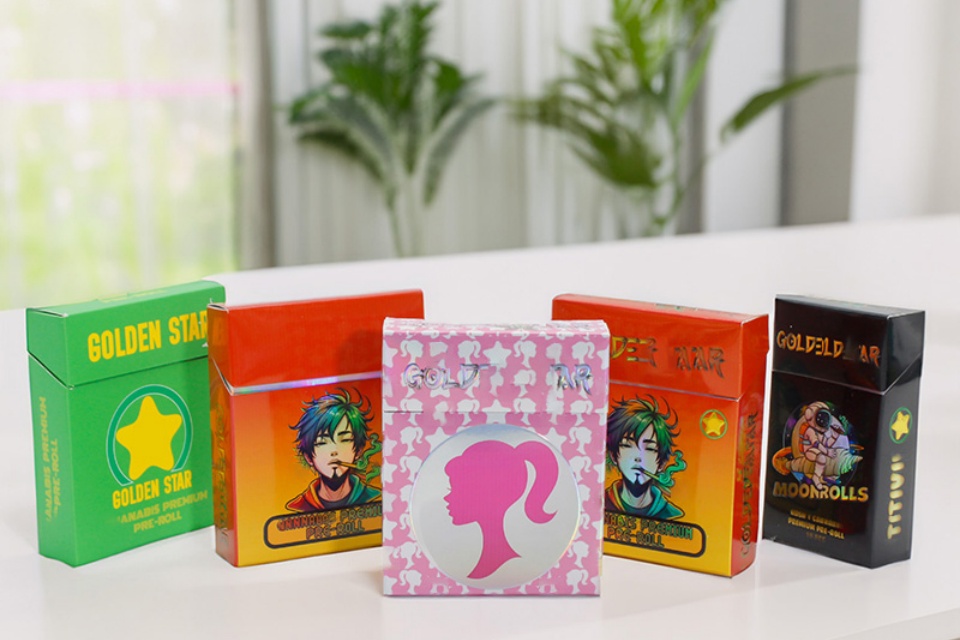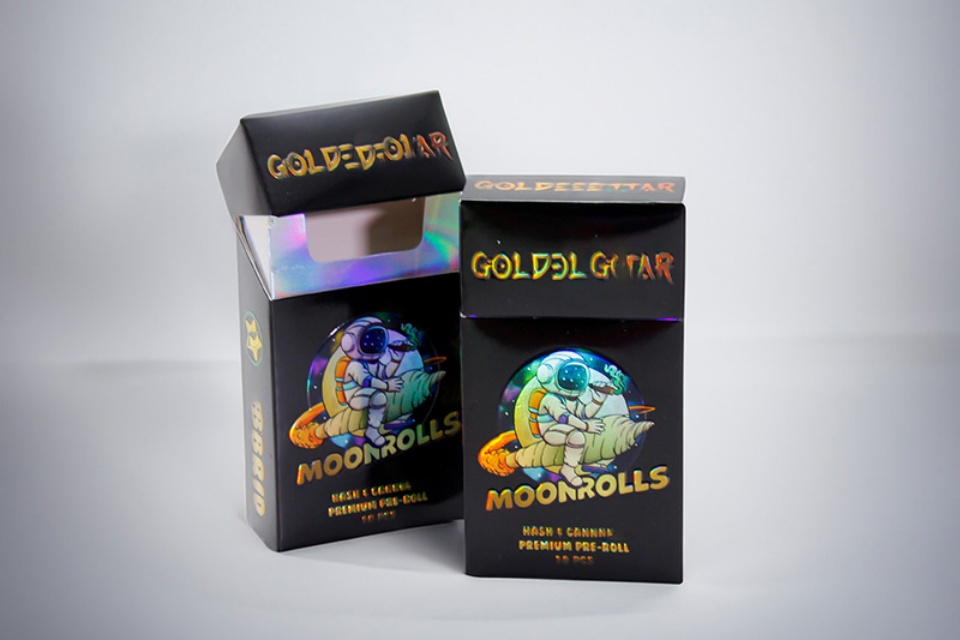Compliance Tips For Pre-Roll Packaging
Compliance Tips For Pre-Roll Packaging
Summary
Compliance Tips for Pre-Roll Packaging is a crucial topic within the cannabis industry, addressing the regulatory requirements and best practices for packaging pre-rolled cannabis products. As the market for cannabis continues to expand, compliance with packaging regulations has become increasingly complex, with governments worldwide implementing stringent measures to ensure consumer safety and environmental sustainability. This article provides an overview of the necessary compliance measures for businesses involved in pre-roll packaging, including child-resistant features, tamper-evident designs, and comprehensive labeling that adheres to local and state regulations.
The significance of this topic is underscored by the ongoing evolution of regulatory frameworks, such as the European Union's Ecodesign for Sustainable Products Regulation (ESPR) and various state-specific mandates in the United States. These regulations require packaging to not only meet safety standards but also promote sustainability by using recyclable or biodegradable materials. Failure to comply with these regulations can result in significant financial penalties and reputational damage, making it essential for companies to navigate this intricate landscape effectively.
Moreover, the rising consumer demand for environmentally friendly packaging options adds an additional layer of complexity to compliance efforts. As public awareness of sustainability grows, companies must balance adherence to legal standards with the expectations of eco-conscious consumers. The article highlights the importance of integrating sustainability practices into packaging strategies, as well as the challenges that new entrants face when trying to compete against established firms with existing compliance frameworks.
In summary, this article serves as a comprehensive guide for businesses in the cannabis industry, offering practical compliance tips for pre-roll packaging that prioritize safety, sustainability, and regulatory adherence. With ongoing changes in regulations and increasing market expectations, understanding and implementing these compliance measures is vital for success in the burgeoning cannabis packaging market.
Regulatory Framework
Overview of Compliance Challenges
One of the foremost challenges facing new entrants in the pre-roll packaging market is the increasingly complex regulatory environment. Governments worldwide are tightening regulations related to packaging, driven by growing concerns over sustainability and environmental impact. Companies must navigate a labyrinth of compliance requirements, including material safety, recyclability standards, and labeling mandates. This regulatory landscape necessitates significant time and financial investments, along with expertise in sustainability practices—an area where newcomers may find themselves at a disadvantage compared to established firms that possess the experience and resources to manage these challenges effectively.
Key Regulations
European Union Regulations
In the European Union, the Ecodesign for Sustainable Products Regulation (ESPR), which came into effect on July 18, 2024, plays a pivotal role in promoting sustainable products and circularity. It aims to address the EU's contribution to climate change and pollution by mandating practices that minimize environmental impacts. Compliance with such regulations is non-negotiable; failure to adapt to new standards can lead to unsellable products, resulting in significant losses for companies.
Additionally, the Corporate Sustainability Reporting Directive (CSRD) enhances transparency and mandates that sustainability reports be audited for accuracy. This regulation applies to a broader range of companies, thereby standardizing sustainability at a federal level in the EU for the first time.
State-Specific Regulations
In the United States, state regulations heavily influence packaging choices, requiring businesses to balance compliance with functionality. For example, California mandates child-resistant packaging, opaque containers for edibles, and specific labeling requirements, including a universal cannabis symbol. Other states, such as Oregon, impose restrictions on transparent packaging and imagery that could appeal to children.
These regulations often extend to detailed labeling requirements. Packaging must include product warnings, THC and CBD content, and health information. Moreover, regulations can vary significantly from state to state, impacting everything from packaging materials to font sizes and label content.
Compliance and Sustainability
The compliance landscape is further complicated by the rising importance of sustainability standards. Many consumers now demand environmentally friendly packaging options, leading to regulations that require the use of recyclable, biodegradable, or compostable materials. Navigating these evolving standards can be daunting for new firms, as they must stay informed and adapt their practices accordingly. Companies that fail to comply risk severe penalties and potential negative publicity, creating a high-stakes environment for those seeking to establish themselves in the market.
Importance of Expertise
As the regulatory environment continues to change, expertise in navigating compliance requirements becomes critical. Many established firms have robust compliance frameworks integrated into their operations, while new entrants may struggle to understand the intricacies of regulations. This gap in knowledge can lead to delays or setbacks in product launches, further complicating the competitive landscape. Consequently, it is essential for new packaging companies to invest in research, training, and technology to meet sustainability goals and regulatory demands.
Compliance Tips
Compliance in pre-roll packaging is essential for ensuring safety and legality within the cannabis industry. It encompasses various factors such as child resistance, tamper evidence, and proper labeling. Below are key compliance tips to consider when developing pre-roll packaging.
Child-Resistant Features
All cannabis products must utilize child-resistant packaging to prevent children under five from accessing potentially hazardous materials. This can be achieved through designs like bottles with child-resistant caps or pop-top containers featuring inner seals. It is critical to ensure that any packaging is tested and certified by an accredited testing facility before it is brought to market.
Tamper-Evident Packaging
In addition to being child-resistant, packaging should include tamper-evident features. This can involve the use of seals or bands that visibly show if a package has been opened or tampered with, thereby providing an additional layer of consumer safety.
Comprehensive Labeling
Accurate and informative labeling is paramount for compliance. Labels must display warning statements regarding age restrictions, product content, and any health risks associated with consumption. In certain jurisdictions, such as Maryland, a Certificate of Analysis must be included, which provides detailed information about the product's composition. Additionally, labels should not include any elements that might appeal to minors or mislead consumers regarding the product's effects or benefits.
Compliance with Regulatory Standards
Companies must remain vigilant in adhering to federal and state regulations that govern packaging and labeling. This includes understanding the specific requirements of their operating region and ensuring that their packaging is not designed to attract children or mimic non-cannabis food products. Continuous monitoring of regulatory changes is vital, as non-compliance can lead to product recalls and financial losses.
Staff Training and Risk Management
Proper training for staff involved in the handling of pre-roll products is essential for compliance. Employees should be educated about the importance of packaging requirements, including child resistance and proper labeling. Conducting comprehensive training sessions and risk-free exercises can prepare staff to manage hazardous materials safely.
Material Sourcing Considerations
Sourcing materials for packaging must take into account compliance with both safety and sustainability regulations. As consumer preferences shift towards eco-friendly options, companies may face challenges in securing reliable sources for sustainable materials that meet compliance standards. It is advisable to diversify supplier relationships and stay informed about market trends affecting material availability.
Best Practices Checklist
To streamline compliance efforts, companies should implement a basic checklist for packaging in supply chain management:
- Ensure the quality of packaging materials meets international standards.
- Verify accuracy of order numbers and product information.
- Check for defects in packaging integrity.
- Confirm that product packaging shapes and sizes are appropriate for the contents.
By adhering to these compliance tips, companies can navigate the complexities of pre-roll packaging while safeguarding public health and maintaining industry standards.
Best Practices
When it comes to pre-roll packaging in the cannabis industry, adhering to best practices is essential for ensuring compliance with regulations and meeting customer expectations. Below are key strategies for effective pre-roll packaging.
Understanding Regulations
It's crucial to familiarize yourself with the specific regulations that apply to cannabis packaging in your state. This includes safety standards, labeling requirements, and child-resistance measures. For instance, ensuring that your packaging meets child-resistance standards is not just a legal obligation but also a vital aspect of consumer safety. Keeping abreast of changes in legislation will help prevent non-compliance issues that could result in penalties or damage to your brand reputation.
Utilizing Pre-Certified Packaging
Investing in pre-certified packaging solutions simplifies the compliance process. By sourcing wholesale packaging that is already approved for use, businesses can avoid the lengthy vetting process for new packaging solutions. This approach not only saves time but also ensures consistency across product lines, which is vital for brand identity and regulatory clarity.
Prioritizing Packaging Consistency
Consistency in packaging enhances brand recognition and facilitates better inventory management. Using uniform packaging for different products allows for standardized labeling and simplifies internal operations such as filling and quality control. This is particularly important in the cannabis industry, where supply chain disruptions can occur due to varying state regulations.
Incorporating Sustainability
With rising consumer demand for environmentally friendly packaging, businesses should consider using recyclable or biodegradable materials in their pre-roll packaging. Not only does this meet consumer expectations, but it also helps companies comply with increasing sustainability standards, which are becoming essential in the marketplace. Integrating sustainable practices into packaging can also serve as a benchmark for evaluating the success of your business initiatives.
Emphasizing Automation and Technology
Leveraging technology in packaging operations can enhance efficiency and reduce waste. Automation can improve the speed and precision of packaging processes, while also addressing skill gaps in the workforce. Implementing advanced technologies can lead to better compliance with regulations through improved tracking and safety measures, making it easier to manage the complexities of cannabis packaging requirements.
Continuous Education and Training
To keep up with the evolving regulatory landscape, companies should invest in ongoing education and training for their teams. This includes understanding the nuances of compliance requirements, sustainability practices, and the latest packaging technologies. Ensuring that employees are knowledgeable about these areas will mitigate risks associated with non-compliance and position the company favorably in the competitive cannabis market.
By adopting these best practices, cannabis companies can not only achieve compliance but also enhance their operational efficiency and brand reputation in the burgeoning pre-roll market.
Challenges in Compliance
Compliance with packaging regulations poses significant challenges for businesses, particularly in the cannabis industry. The landscape of sustainability and packaging regulations is constantly evolving, making it a daunting task for new entrants to navigate the complexities associated with compliance and sustainability standards.
Evolving Regulatory Landscape
Regulatory frameworks such as the Ecodesign for Sustainable Products Regulation (ESPR) and the Packaging and Packaging Waste Regulation (PPWR) are examples of recent initiatives aimed at promoting sustainable practices within the industry. These regulations are designed to address the environmental impact of packaging, requiring companies to utilize recyclable, biodegradable, or compostable materials while minimizing waste during production processes. As new regulations emerge and existing ones are updated, businesses must remain vigilant and adapt swiftly to avoid penalties for non-compliance.
Complexity and Financial Implications
The intricacy of compliance can lead to significant financial burdens for companies. Adhering to various obligations, such as safety standards and labeling requirements, often requires substantial investments in research, training, and technology. Furthermore, the initial costs associated with transitioning to compliant and sustainable packaging options can be a hurdle for startups, as they must balance these expenses against the need for innovation and competitive pricing. For instance, sustainable packaging materials can be more expensive due to sourcing challenges and material shortages, adding to the financial strain on companies trying to maintain profitability while adhering to regulations.
Market Expectations and Consumer Demand
As consumers increasingly prioritize environmentally friendly packaging, businesses must not only comply with regulations but also meet market expectations. Failure to align with sustainability practices can lead to a competitive disadvantage and reduced market acceptance. In this context, regulatory compliance becomes a barometer of success, with many businesses measuring the efficacy of their sustainability initiatives by their ability to adhere to these standards.
Lack of Industry Experience
New companies entering the packaging market often face challenges stemming from a lack of industry experience. Established firms typically have robust compliance frameworks integrated into their operations, providing them with an advantage over newcomers who may struggle to understand and implement the complex regulatory requirements. The potential for stiff penalties for non-compliance adds an additional layer of risk, compelling new entrants to prioritize compliance while simultaneously seeking to differentiate their products in a crowded marketplace.
Success Stories
Embracing Sustainability in Packaging
One notable success story in the pre-roll packaging industry revolves around a cannabis packaging company that pivoted to prioritize sustainability. Initially struggling with high employee turnover and customer skepticism, the company's leadership committed to eco-friendly practices. This shift fostered a sense of pride among employees, leading to a more engaged workforce that was enthusiastic about the company's mission to produce sustainable packaging solutions. As a result, the company experienced increased brand loyalty and market acceptance, highlighting the importance of aligning corporate values with consumer expectations in the competitive landscape of pre-roll packaging.
Navigating Regulatory Compliance
Another successful case is that of a newly established packaging firm that proactively addressed the complexities of regulatory compliance. By investing in compliance training and consultations with industry experts, the company was able to integrate a robust framework to meet safety standards and labeling requirements. This dedication not only helped them avoid costly penalties but also positioned them as a trustworthy brand among consumers. Their commitment to understanding and adhering to regulations served as a benchmark for other emerging businesses in the industry, showcasing that thorough compliance can lead to long-term success and consumer trust.
Innovating with Advanced Technologies
A third success story comes from a packaging company that adopted advanced technologies, such as smart packaging and blockchain traceability, to enhance their offerings. By investing in interactive labeling and real-time monitoring systems, they improved supply chain transparency and customer engagement. This innovation not only differentiated them in a crowded market but also aligned their products with the rising demand for sustainability. The company reported a significant increase in sales and customer satisfaction, demonstrating how technological advancements can drive competitive advantage while meeting consumer values in the cannabis sector.
Building a Strong Brand Identity
Finally, a cannabis brand that understood the impact of high-quality, well-designed packaging found remarkable success. By investing in custom packaging that reflected their brand ethos and resonated with their target audience, they significantly enhanced their market presence. Their packaging not only protected the product but also communicated professionalism and trustworthiness, leading to a strong brand identity in the pre-roll market. This approach underscored the essential role of packaging as a marketing tool that can make or break customer perception and ultimately influence purchasing decisions.
Future Trends
In 2024, the pre-roll packaging industry is poised to confront a myriad of challenges and opportunities shaped by evolving consumer expectations, regulatory pressures, and technological advancements. One of the most pressing concerns for new entrants will be navigating the complexities of regulatory compliance and sustainability standards. Governments and international bodies are tightening regulations related to packaging, driven by growing environmental concerns and the push for sustainable practices. New companies must familiarize themselves with a labyrinth of compliance requirements, including material safety and recyclability standards, which could pose significant barriers to entry in an already competitive landscape.
Sustainability and Material Sourcing
The increasing emphasis on sustainability will continue to transform the packaging sector. Innovative materials such as biodegradable plastics, edible packaging, and smart packaging are gaining traction as companies respond to consumer demand for environmentally friendly options. However, these sustainable materials often come with higher costs and limited availability, necessitating smarter procurement strategies and long-term supplier relationships to mitigate the impact of price fluctuations and resource scarcity. As the industry evolves, packaging firms will need to prioritize research and development efforts to create scalable, eco-friendly alternatives that resonate with environmentally conscious consumers.
Technological Advancements
Technological innovation will play a critical role in shaping the future of pre-roll packaging. The adoption of automation, artificial intelligence (AI), and the Internet of Things (IoT) is set to enhance productivity, reduce waste, and improve product tracking and safety. Companies that leverage these technologies can optimize their operations, lower costs, and deliver tailored solutions that meet specific customer needs. However, the rapid pace of technological change also poses adaptation challenges, particularly for smaller firms that may struggle to invest in new machinery and staff training without jeopardizing their competitive pricing.
Regulatory Environment
As governments implement stricter regulations like the Ecodesign for Sustainable Products Regulation (ESPR) and the Packaging and Packaging Waste Regulation (PPWR), compliance will become increasingly complex for packaging companies. These regulations not only aim to minimize environmental impacts but also necessitate significant investments in sustainability practices. New entrants must be proactive in understanding and implementing these regulatory requirements to avoid potential penalties and maintain their market position.
Competitive Landscape
The competitive landscape in pre-roll packaging will intensify as brands recognize the critical role of packaging in marketing and customer experience. New companies must differentiate themselves by offering unique and sustainable packaging solutions that align with current consumer values. This requires a deep understanding of consumer expectations and an ability to innovate continually, creating packaging that is not only functional but also aesthetically appealing.



